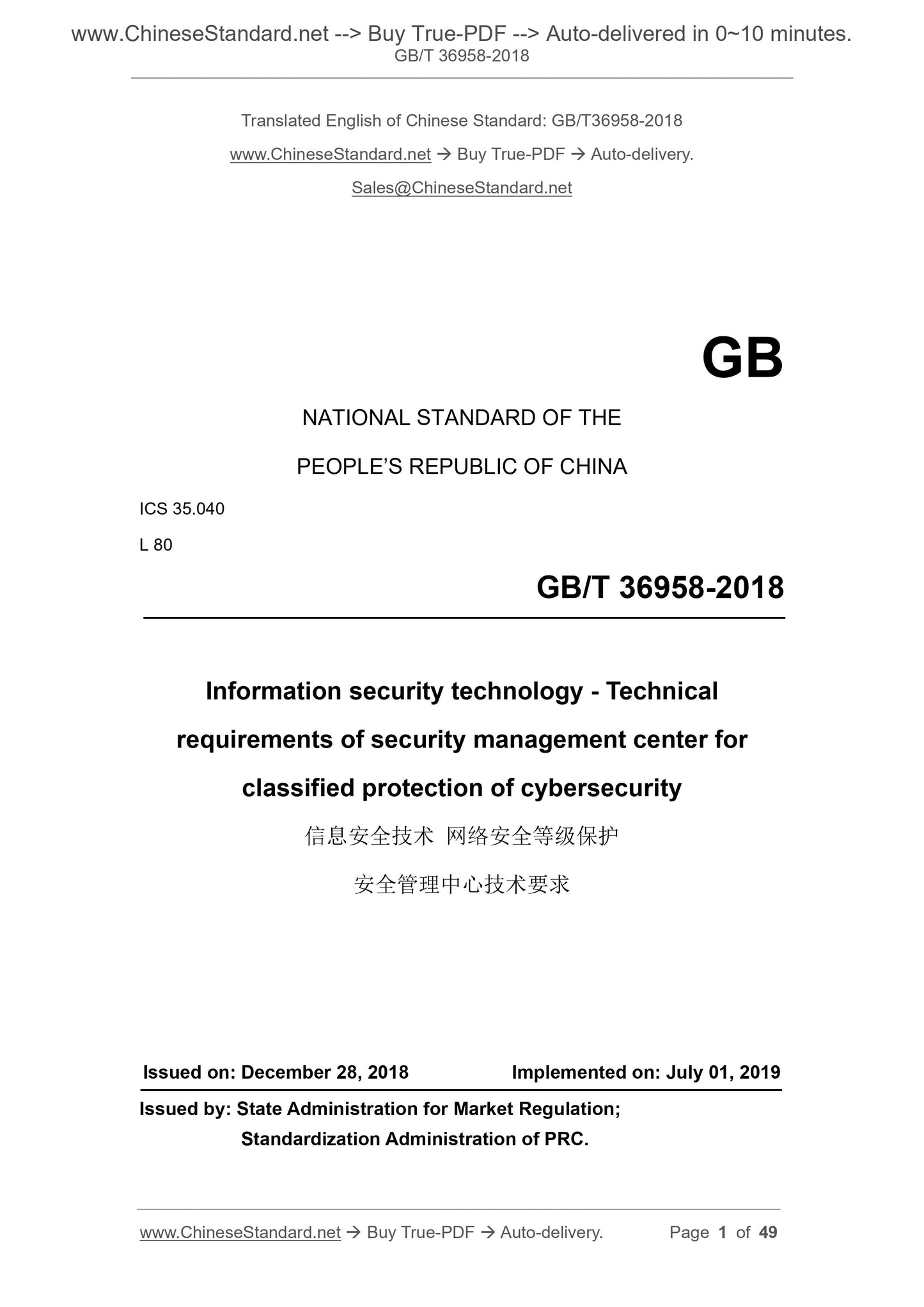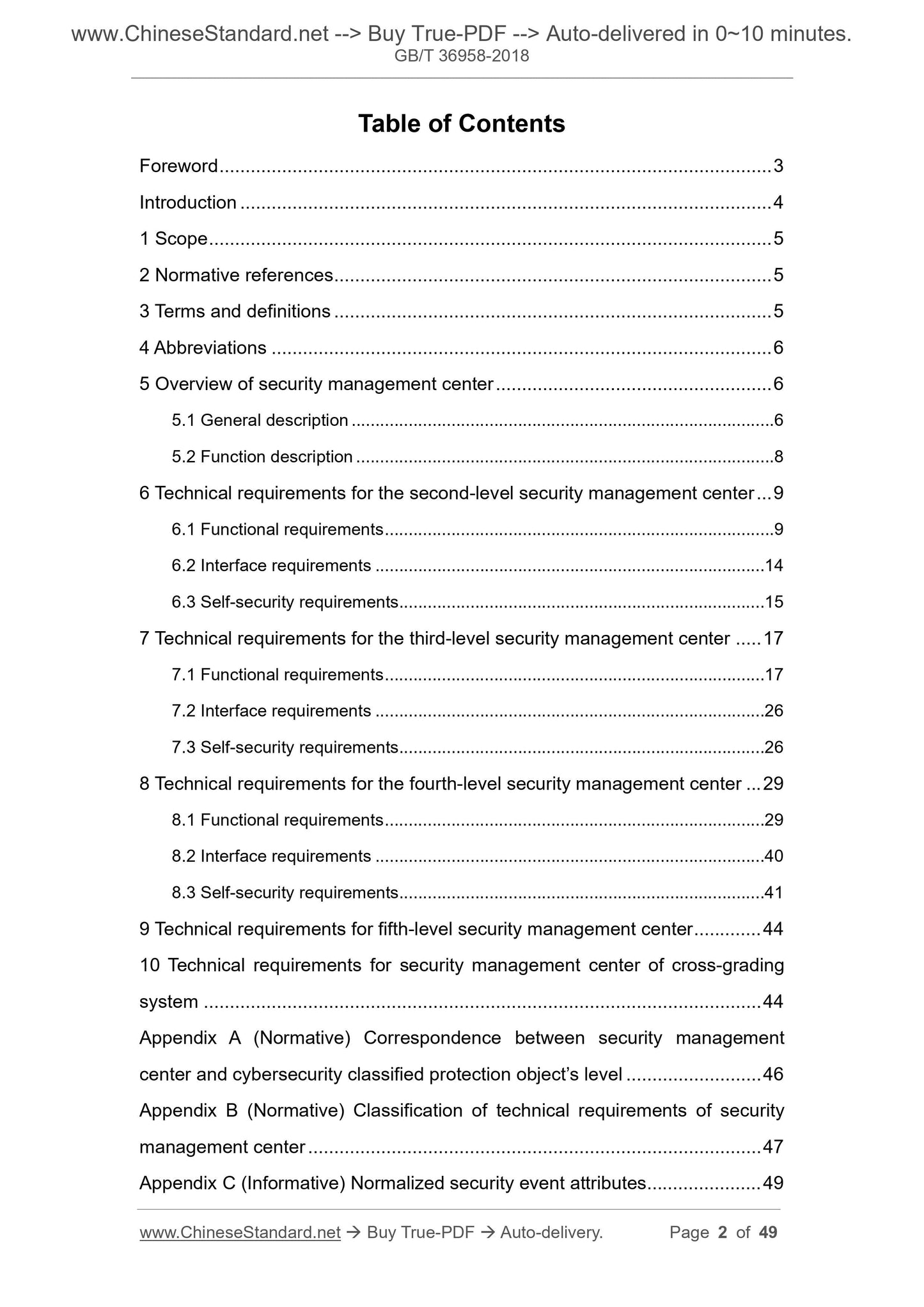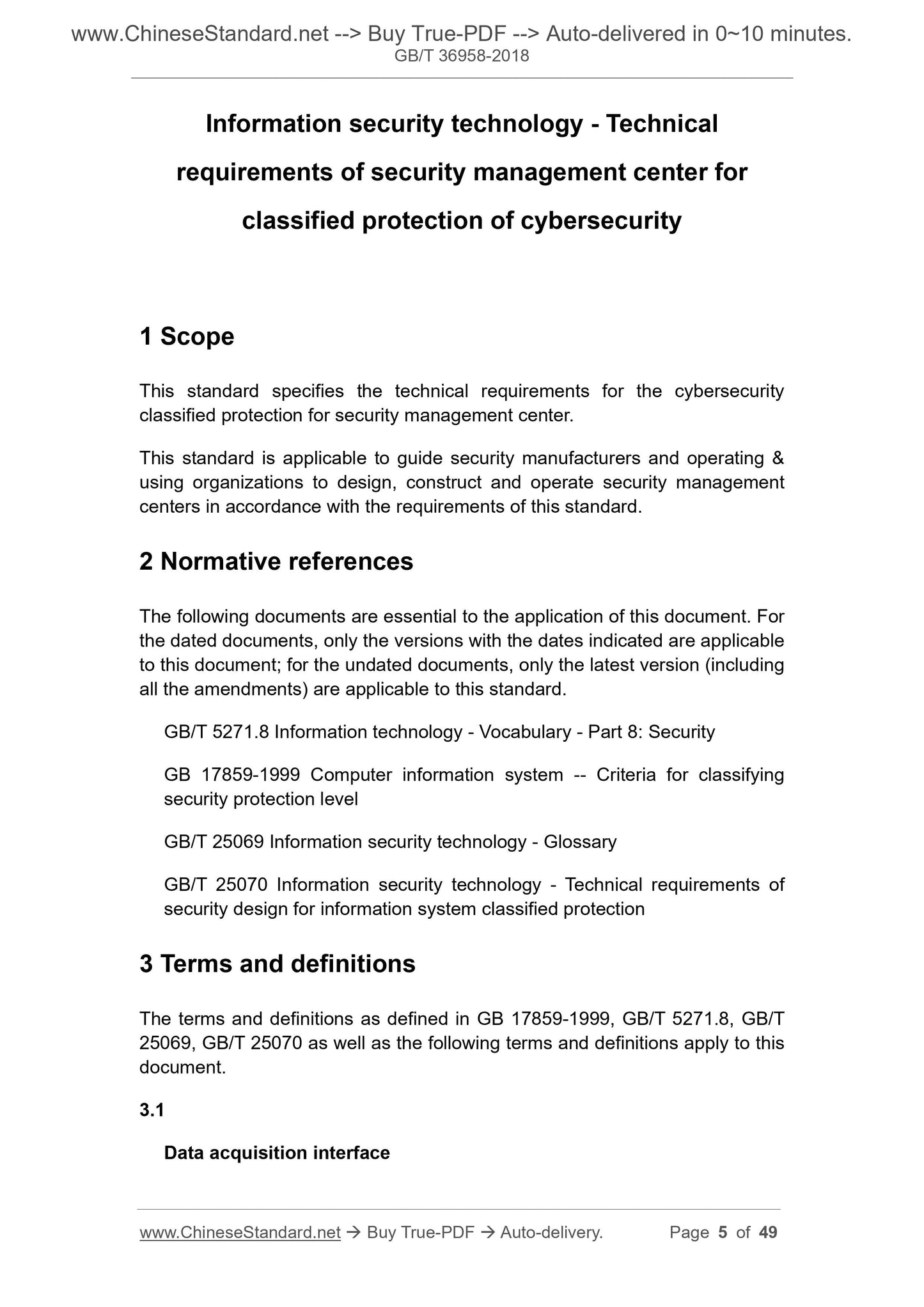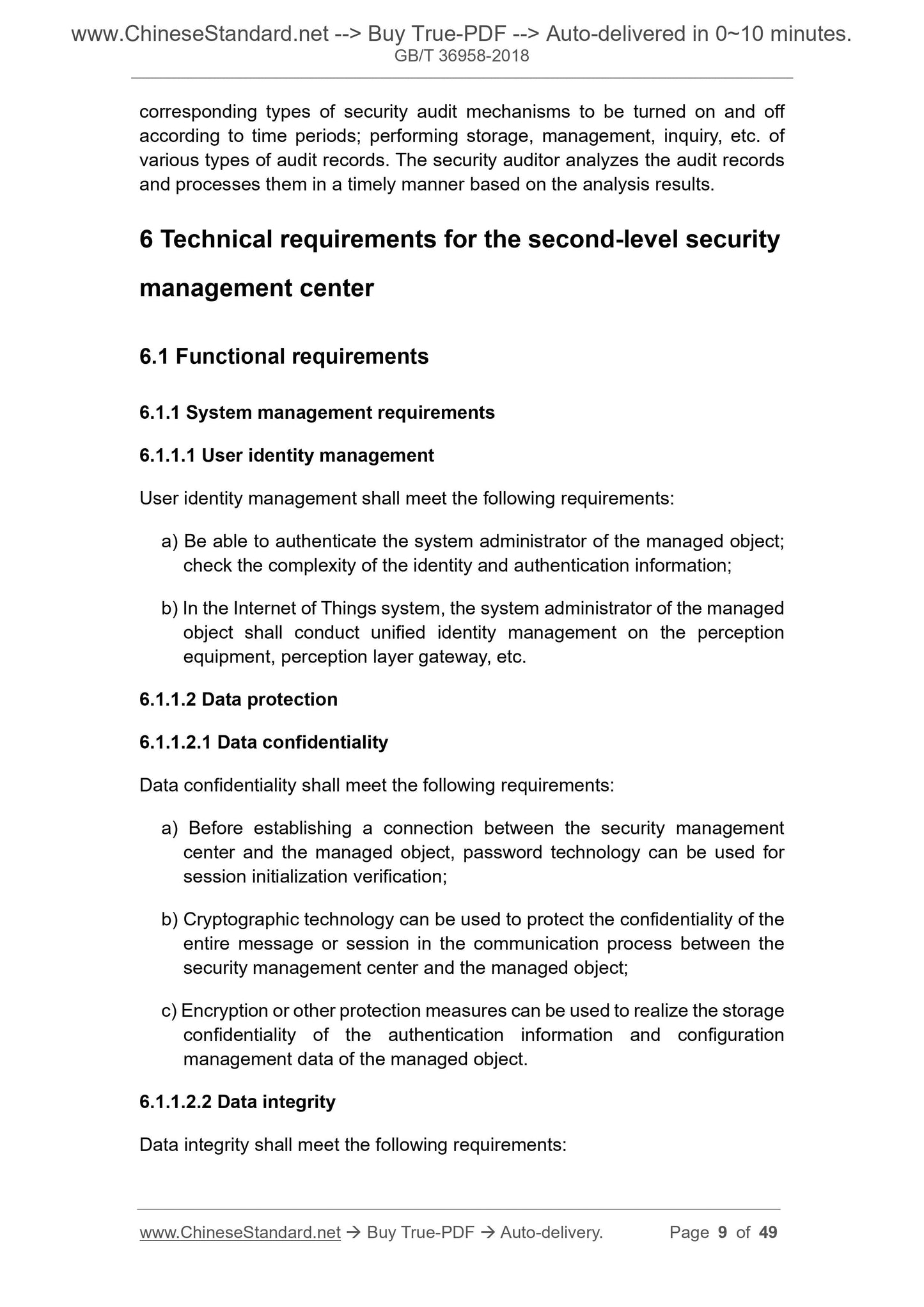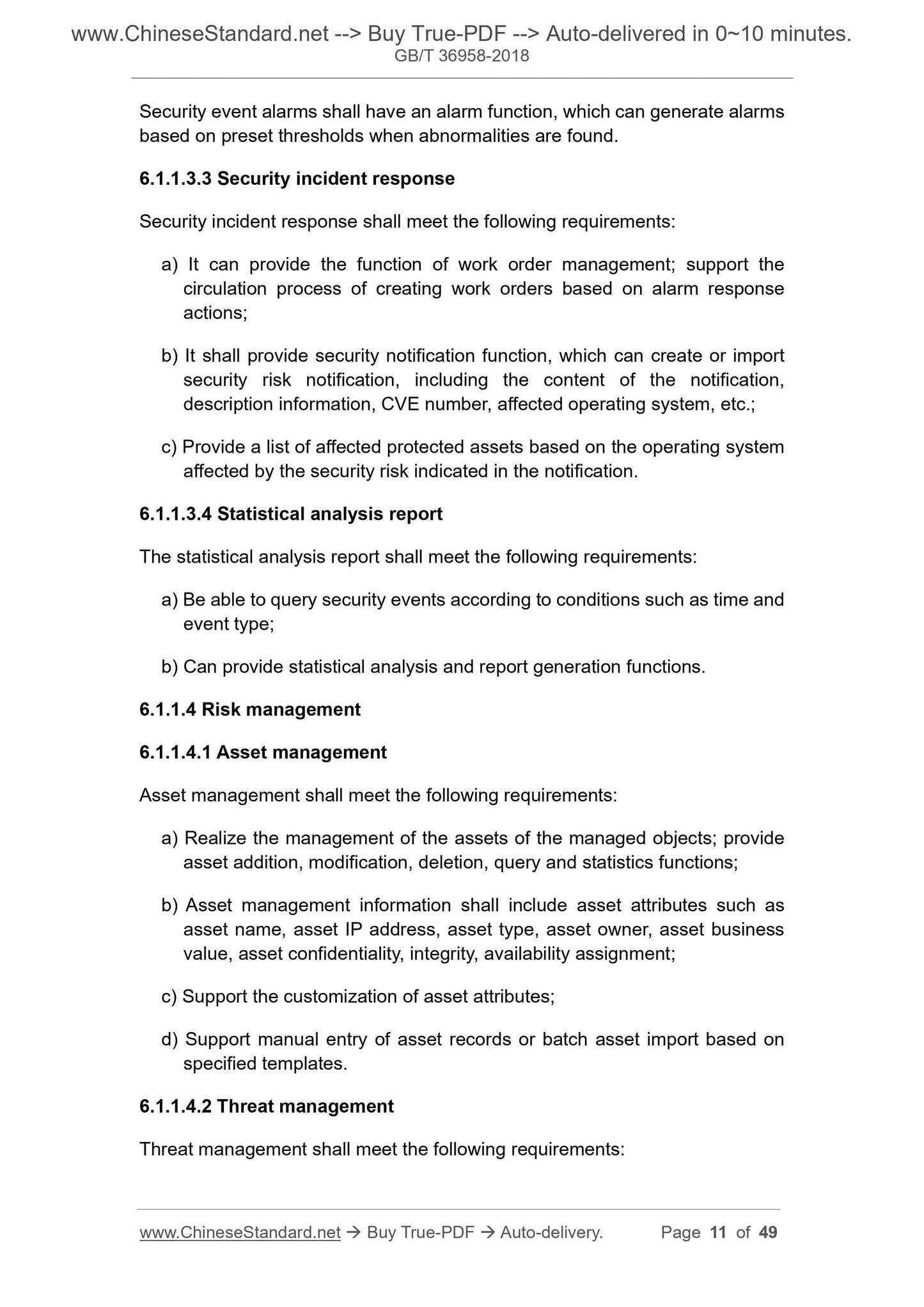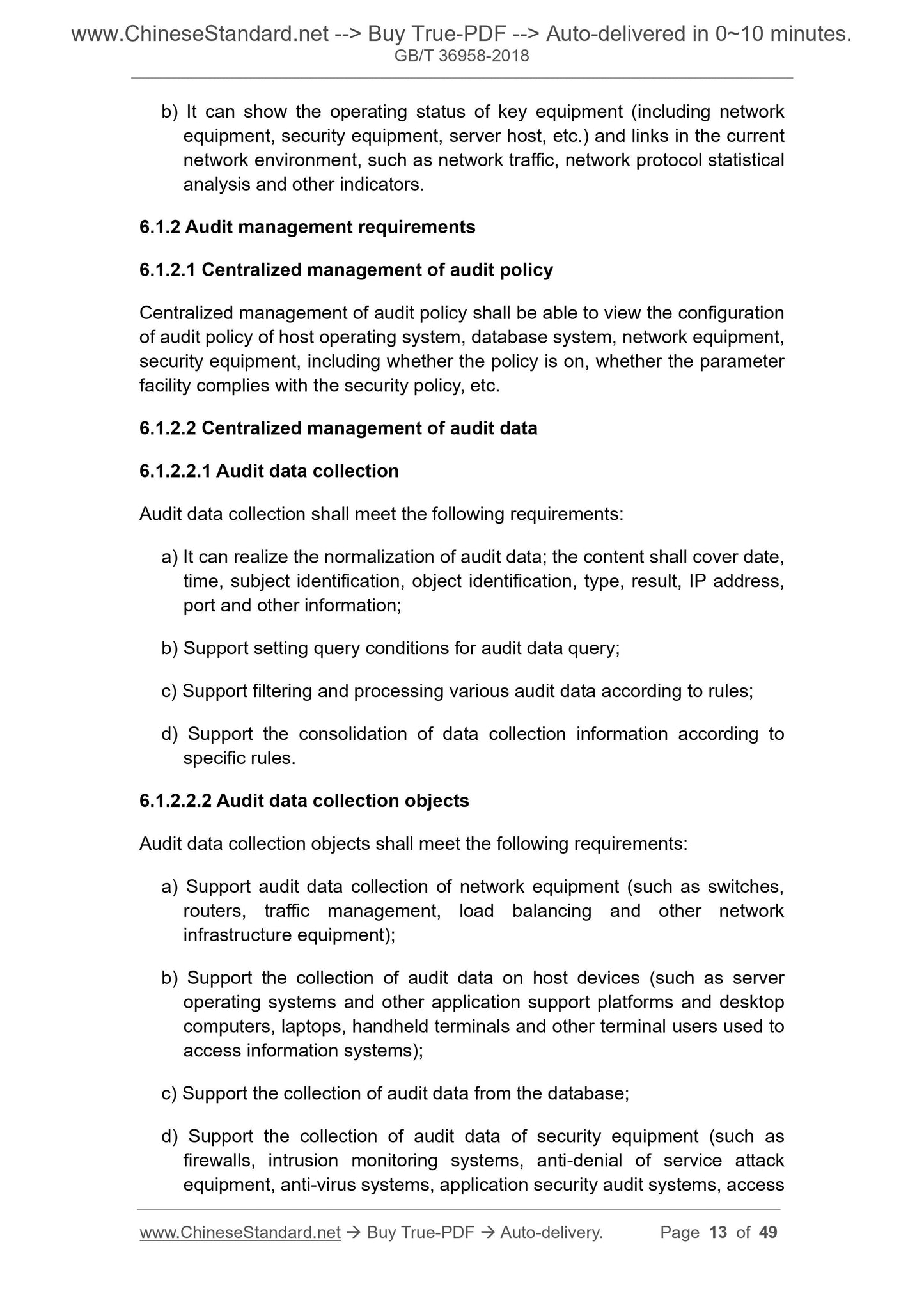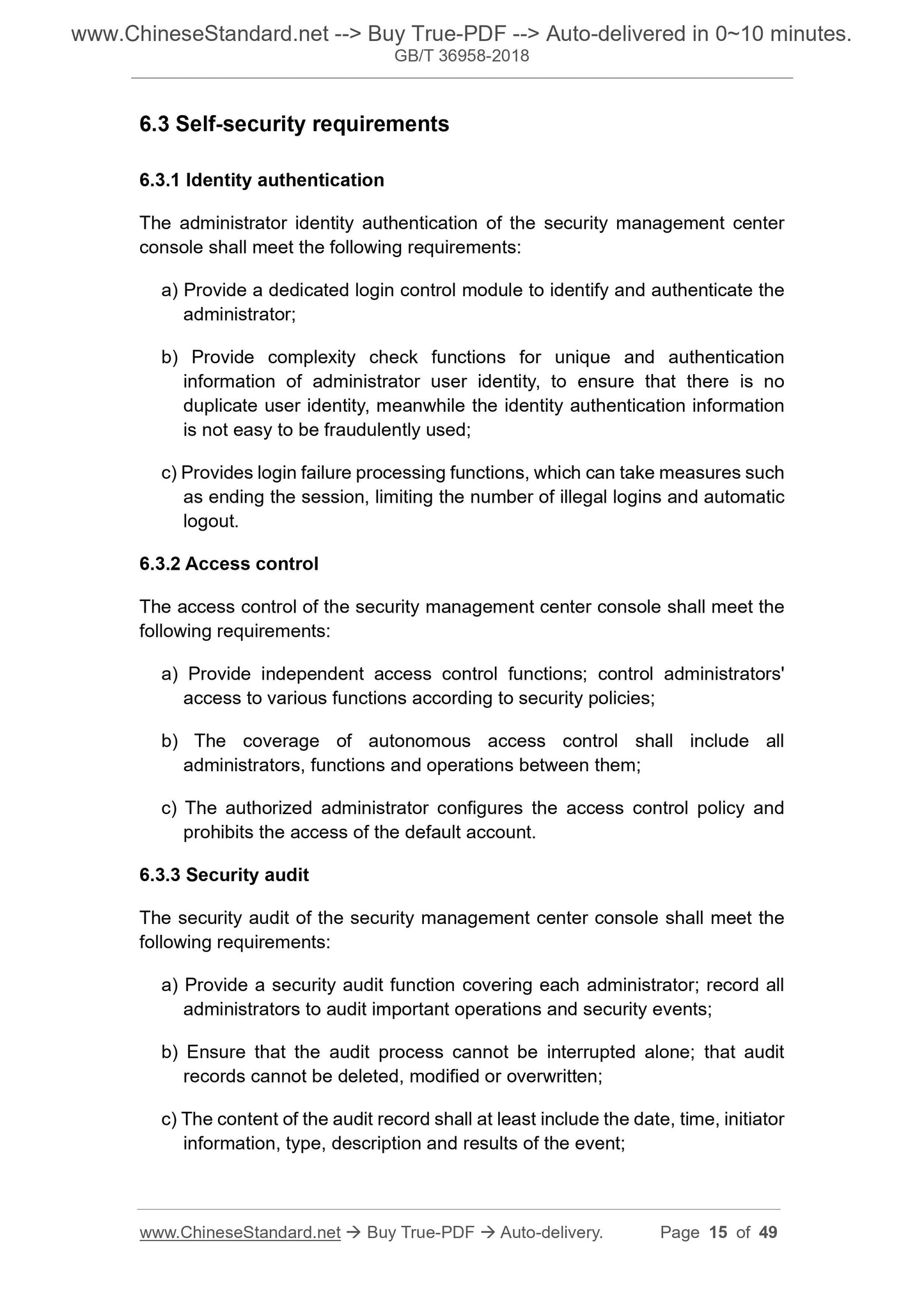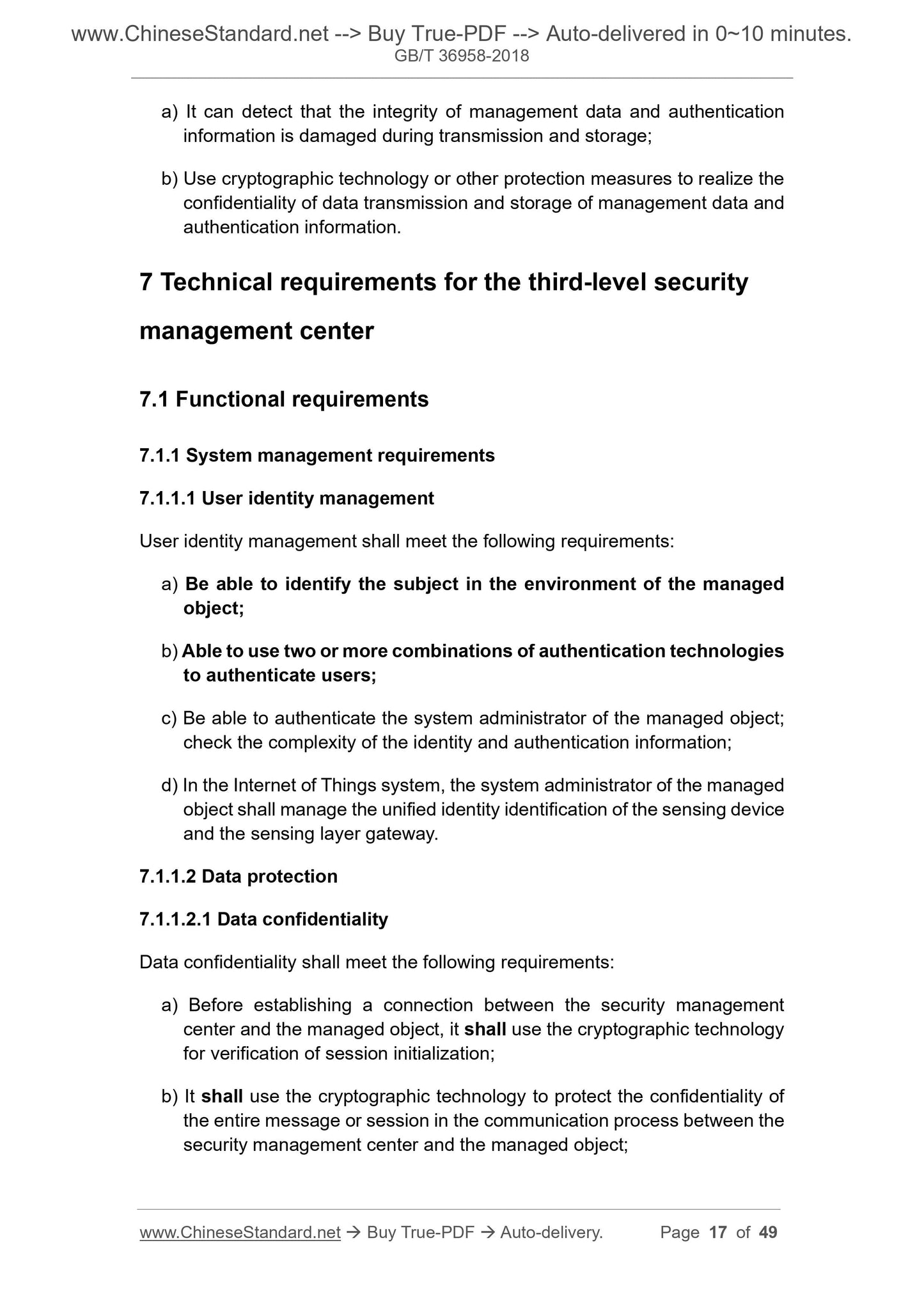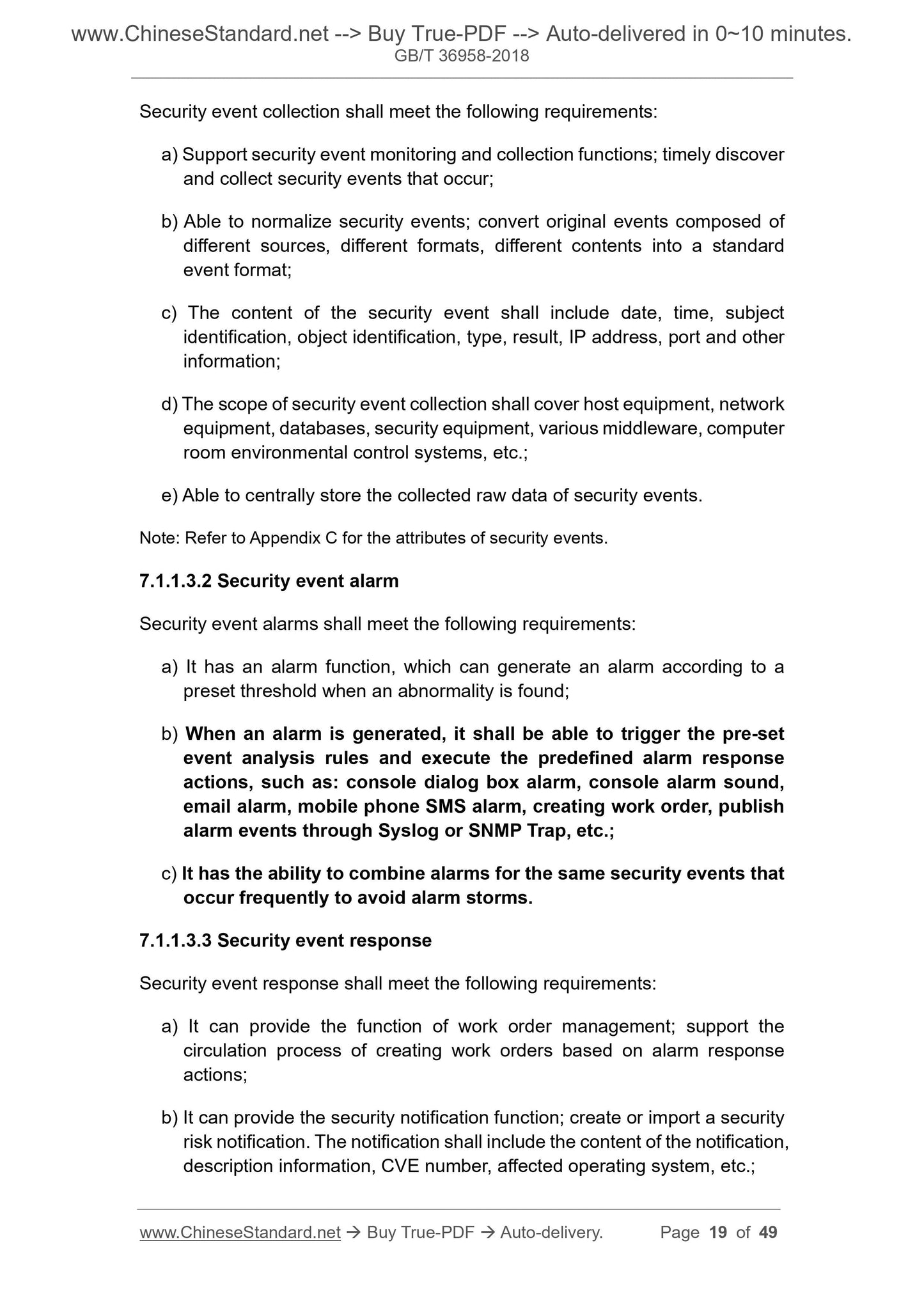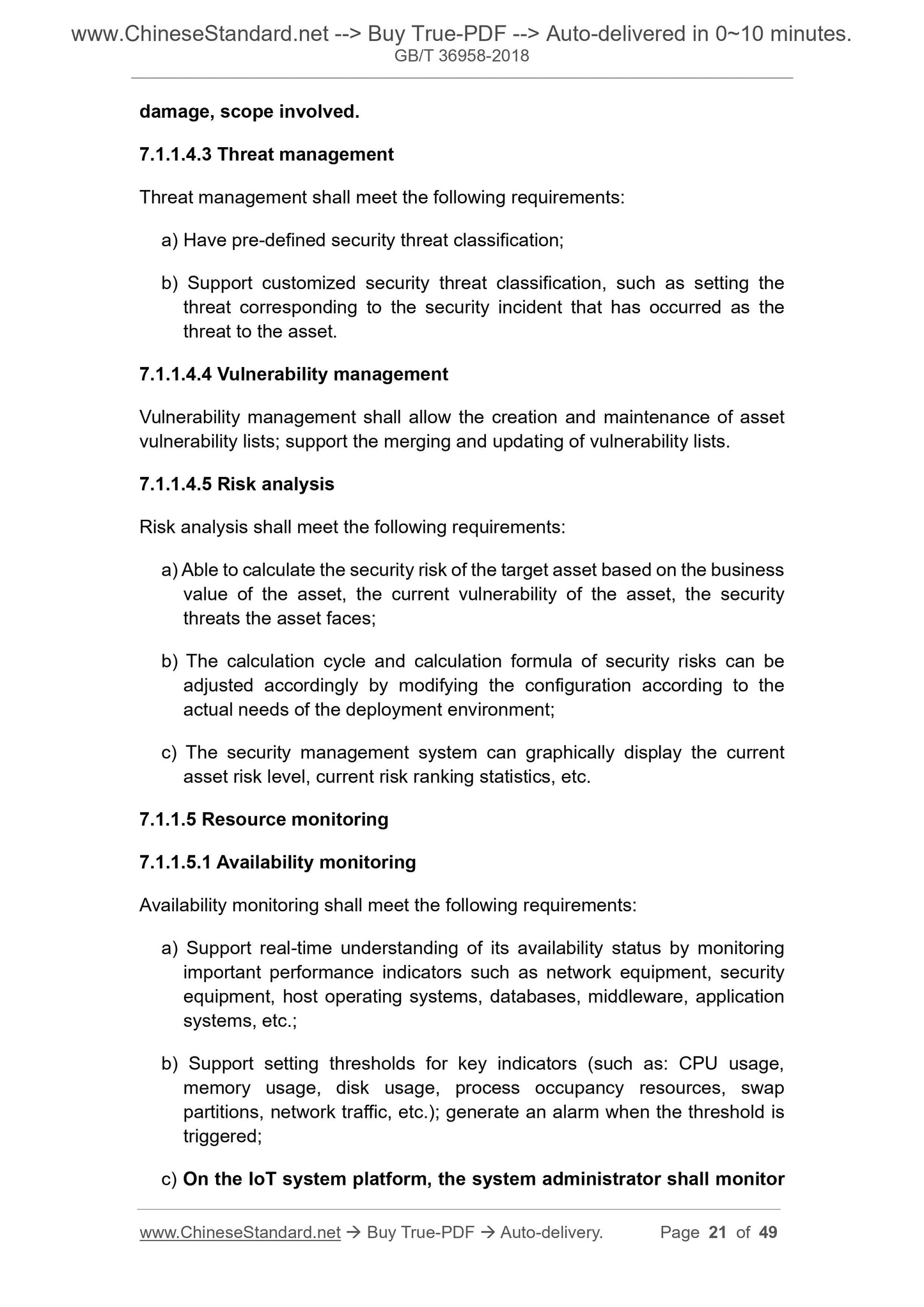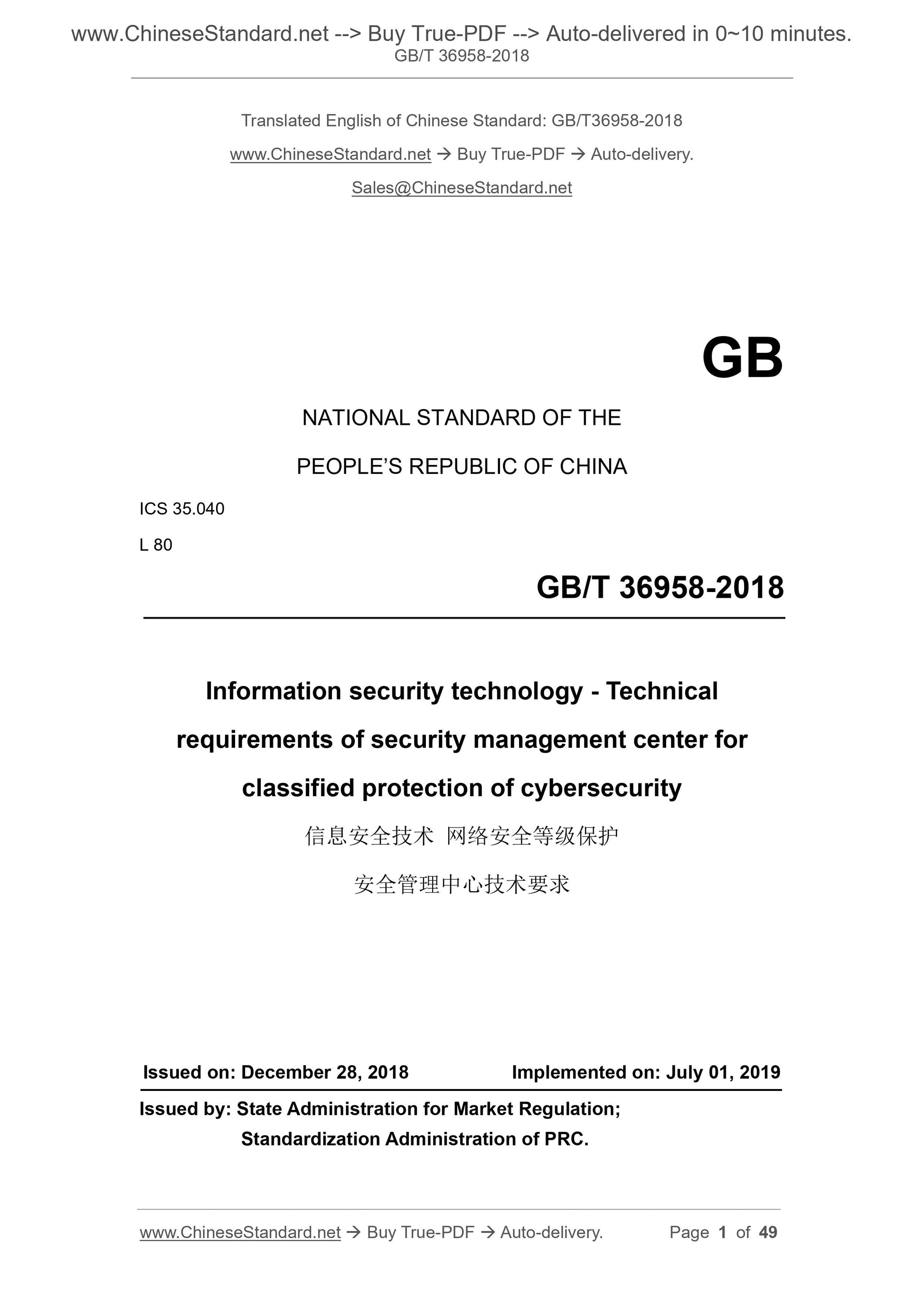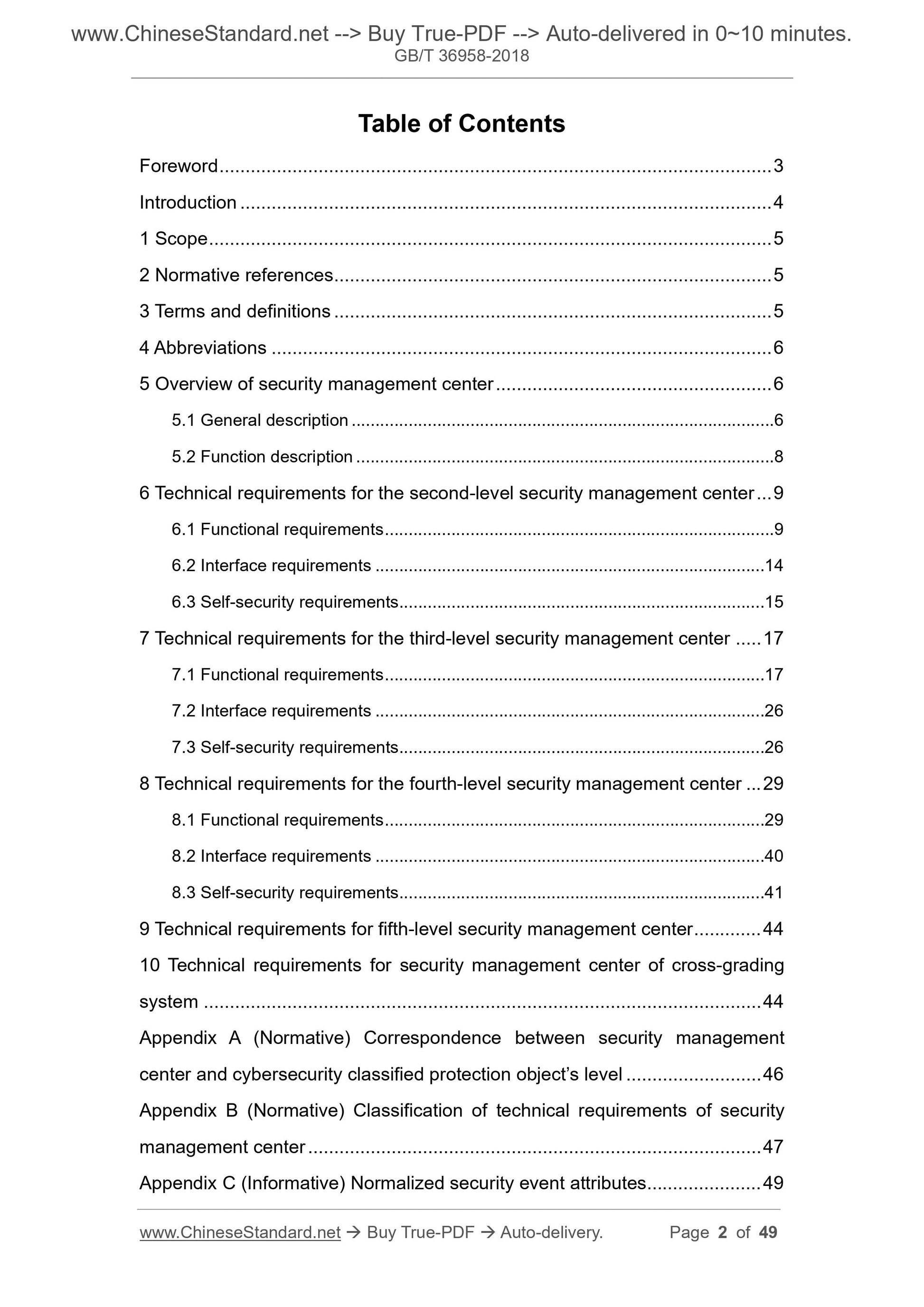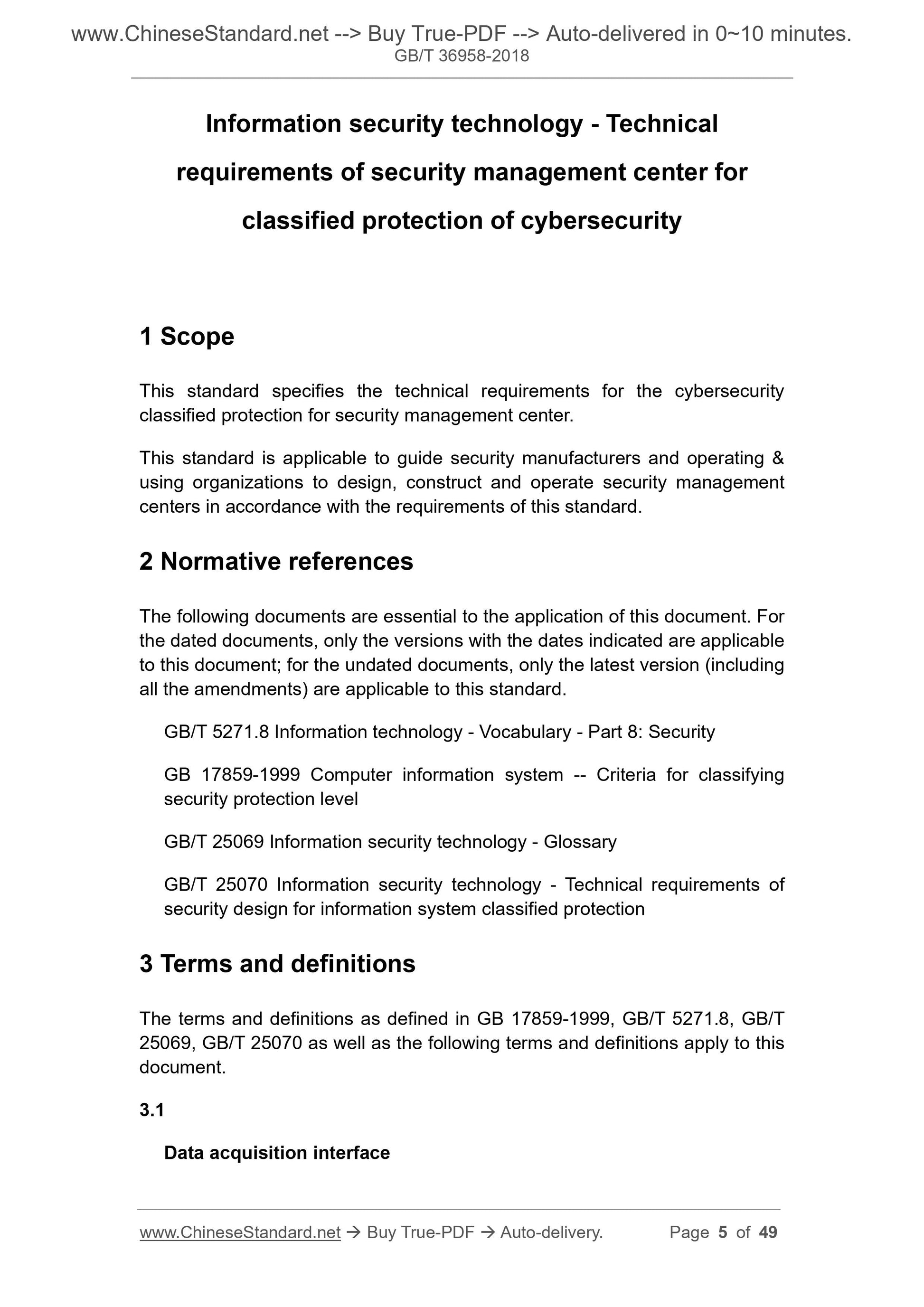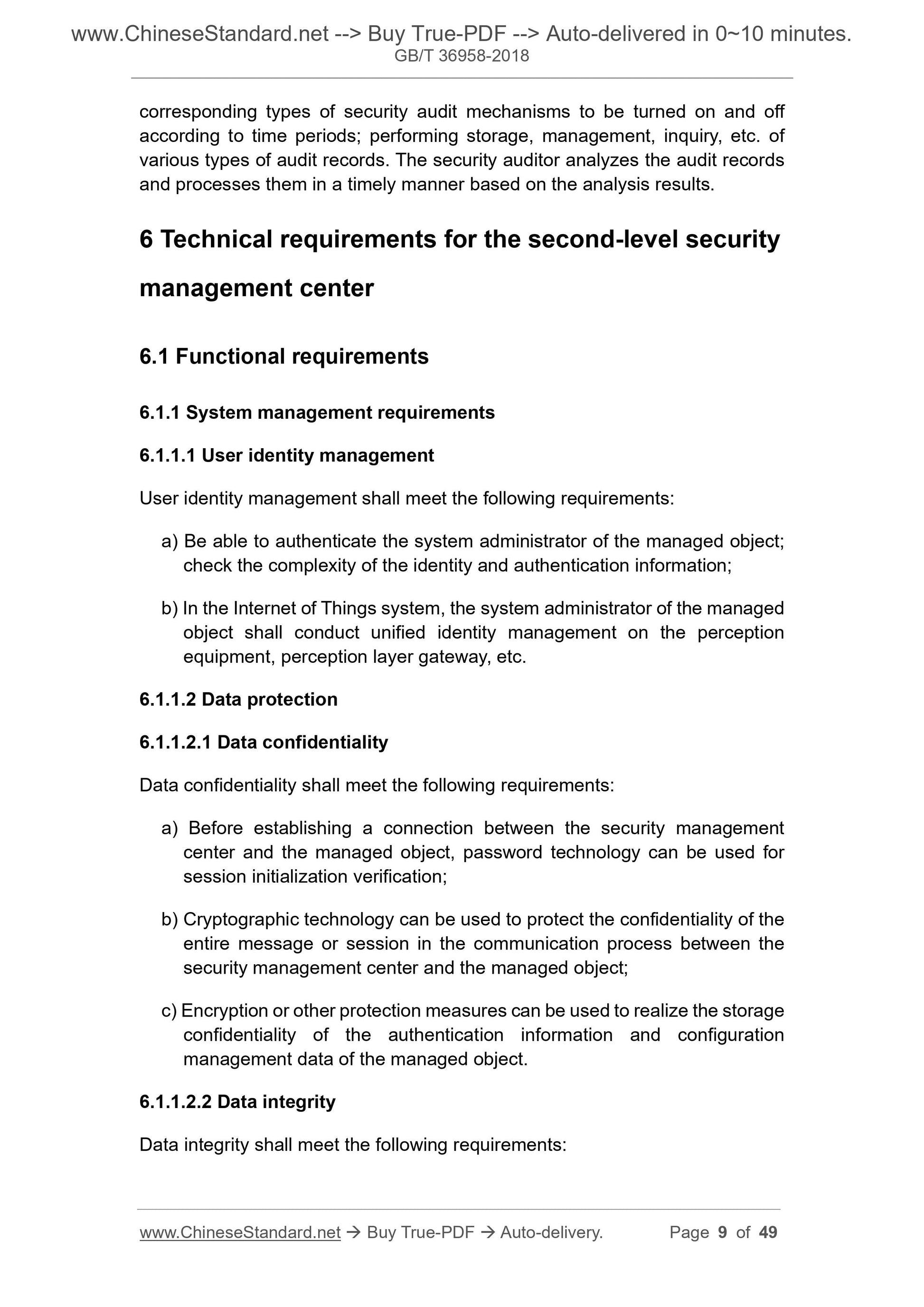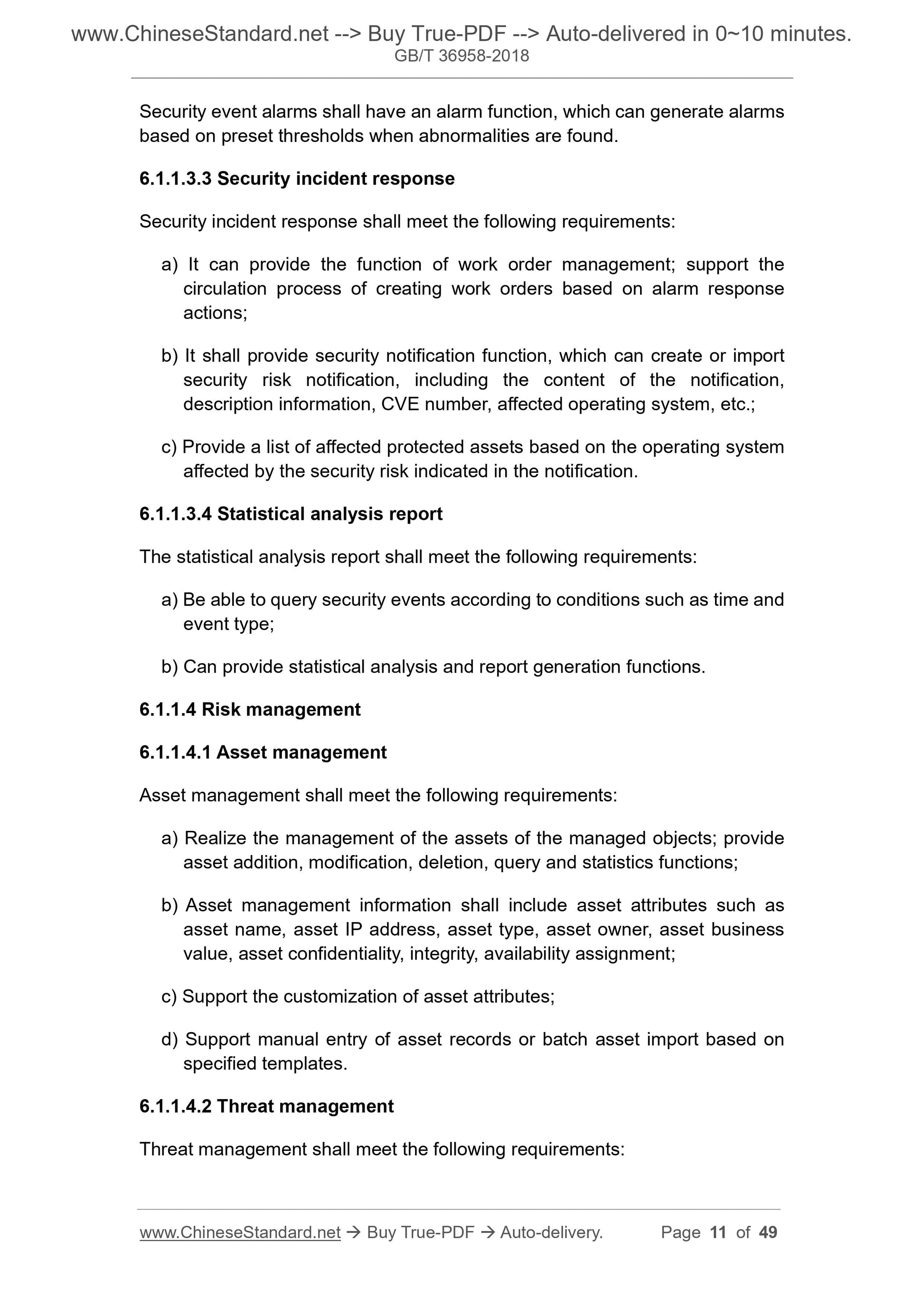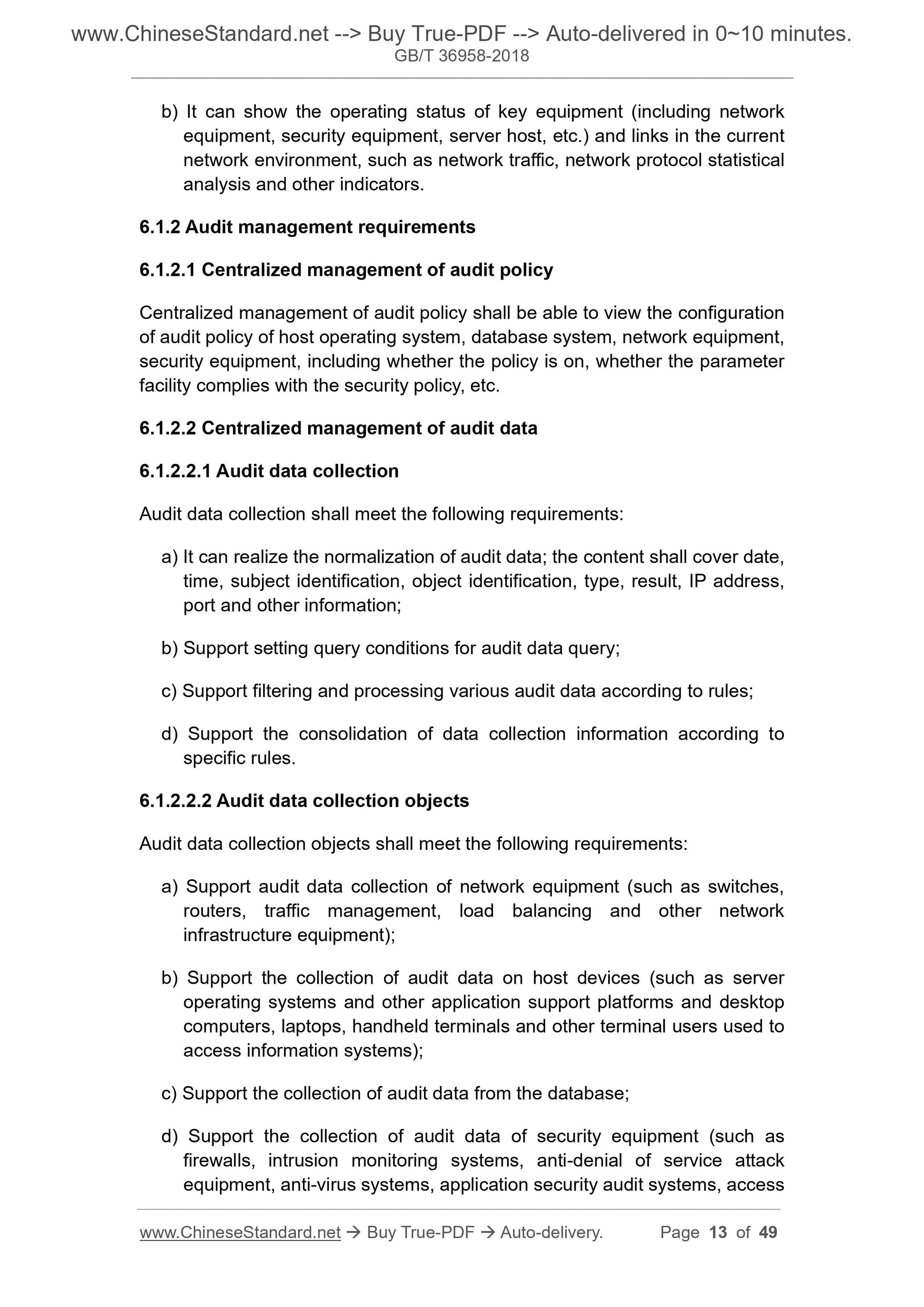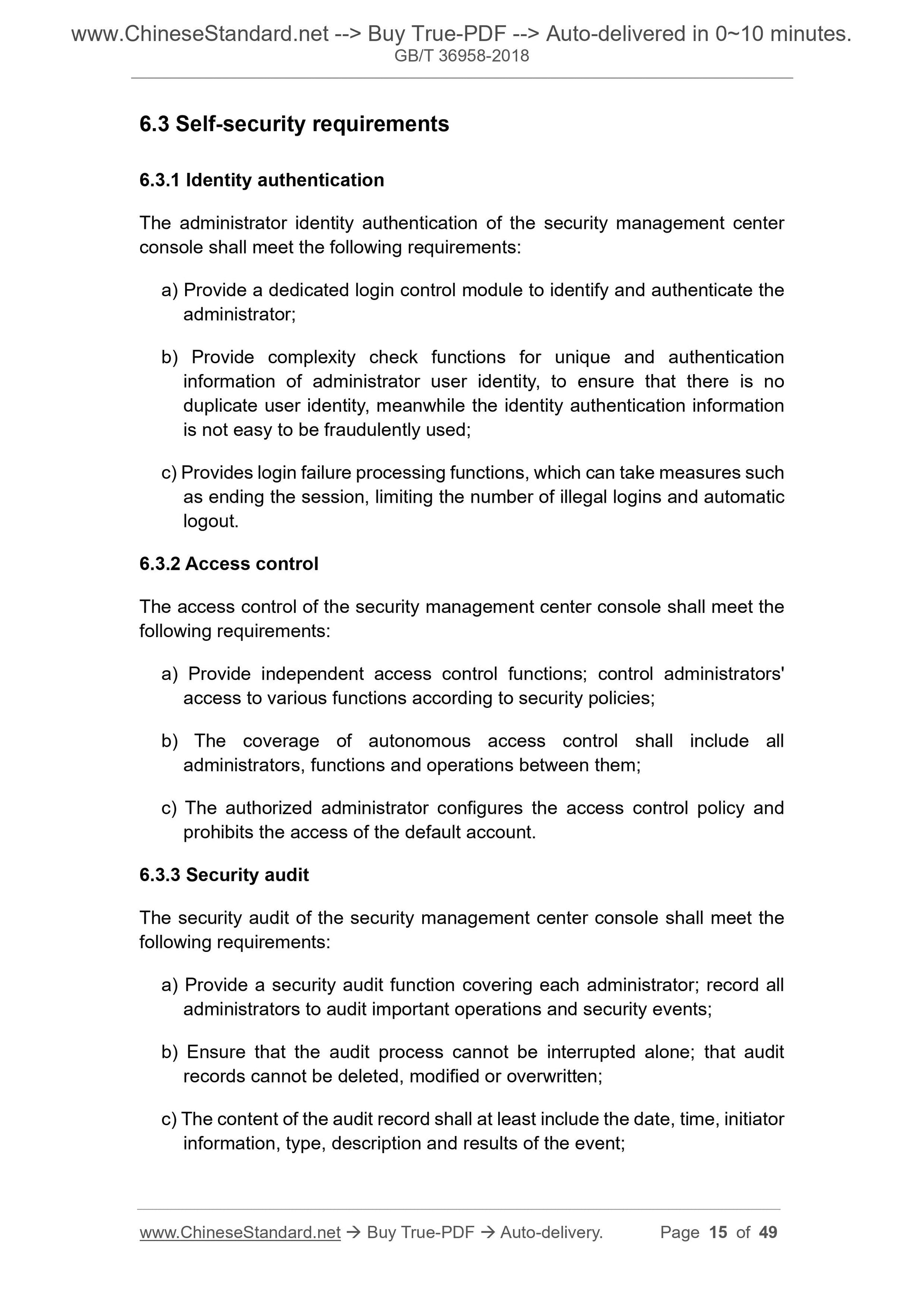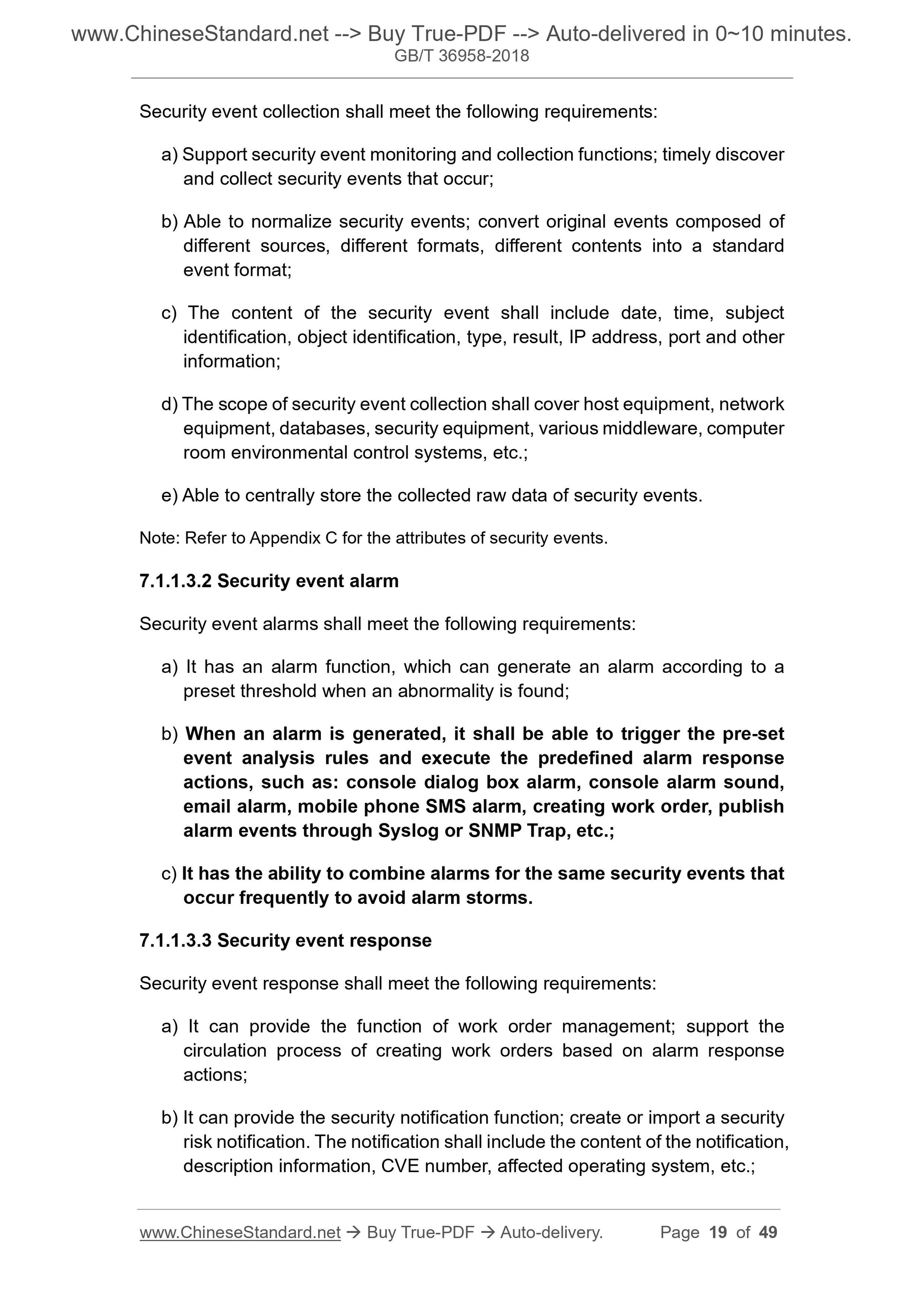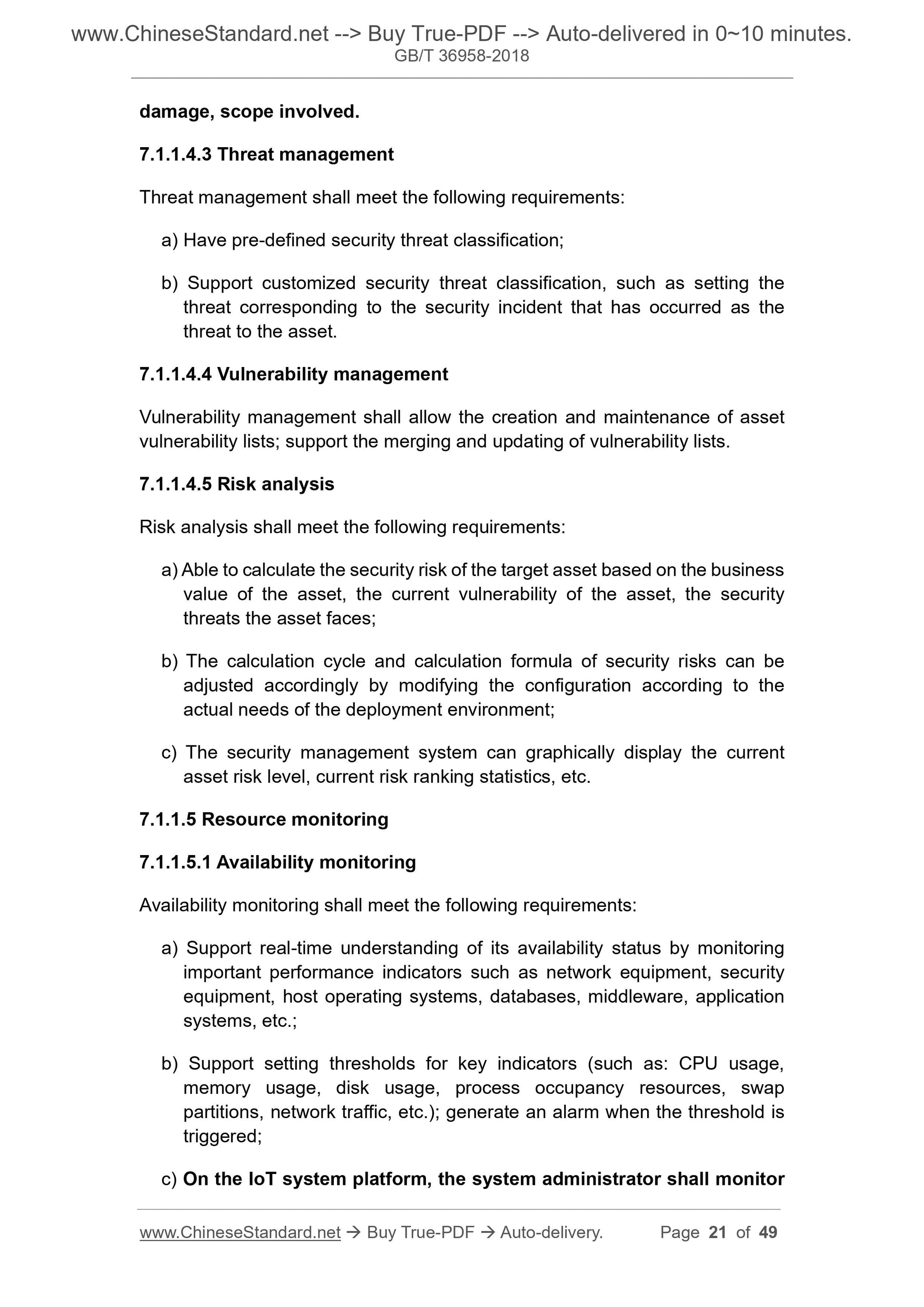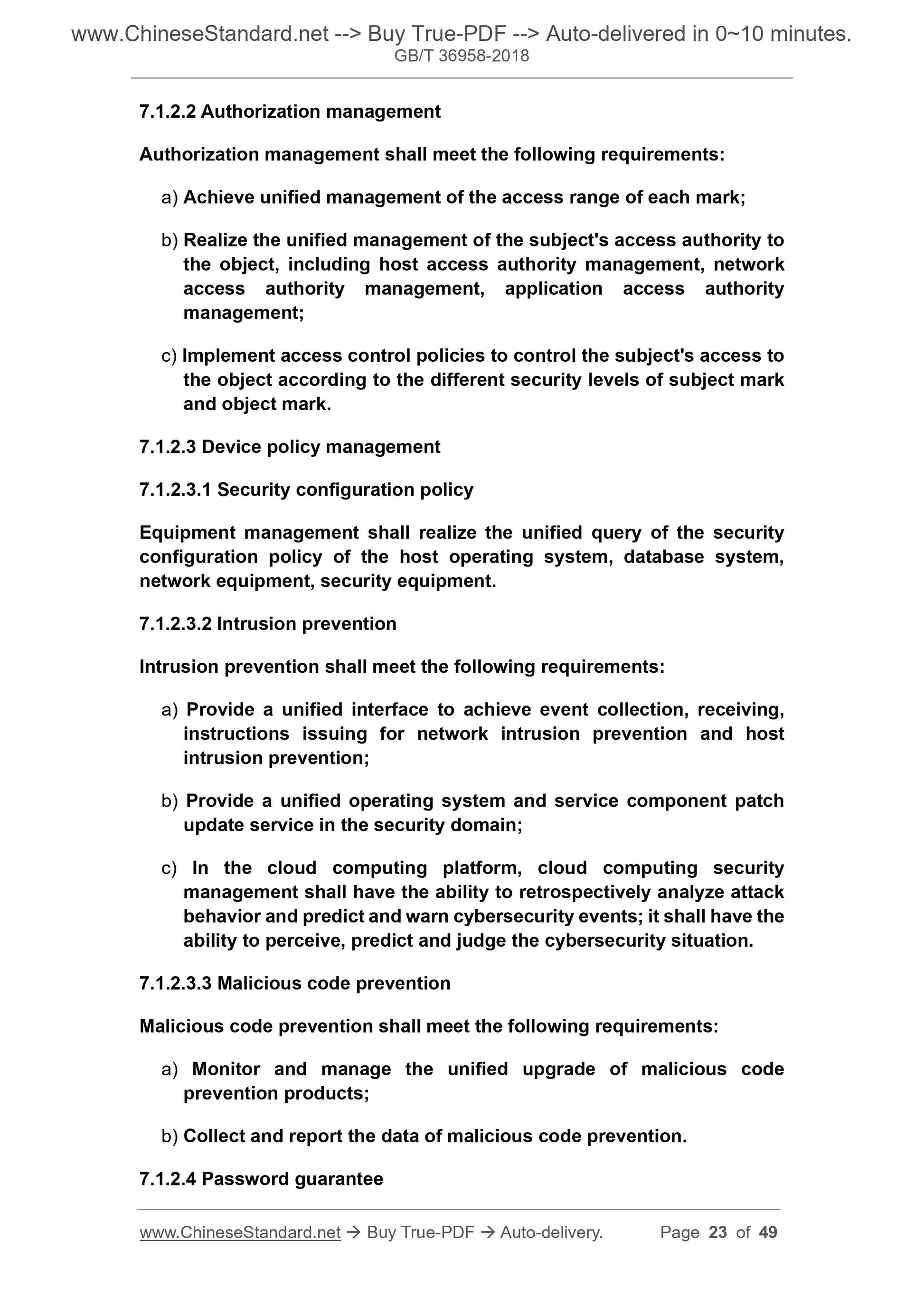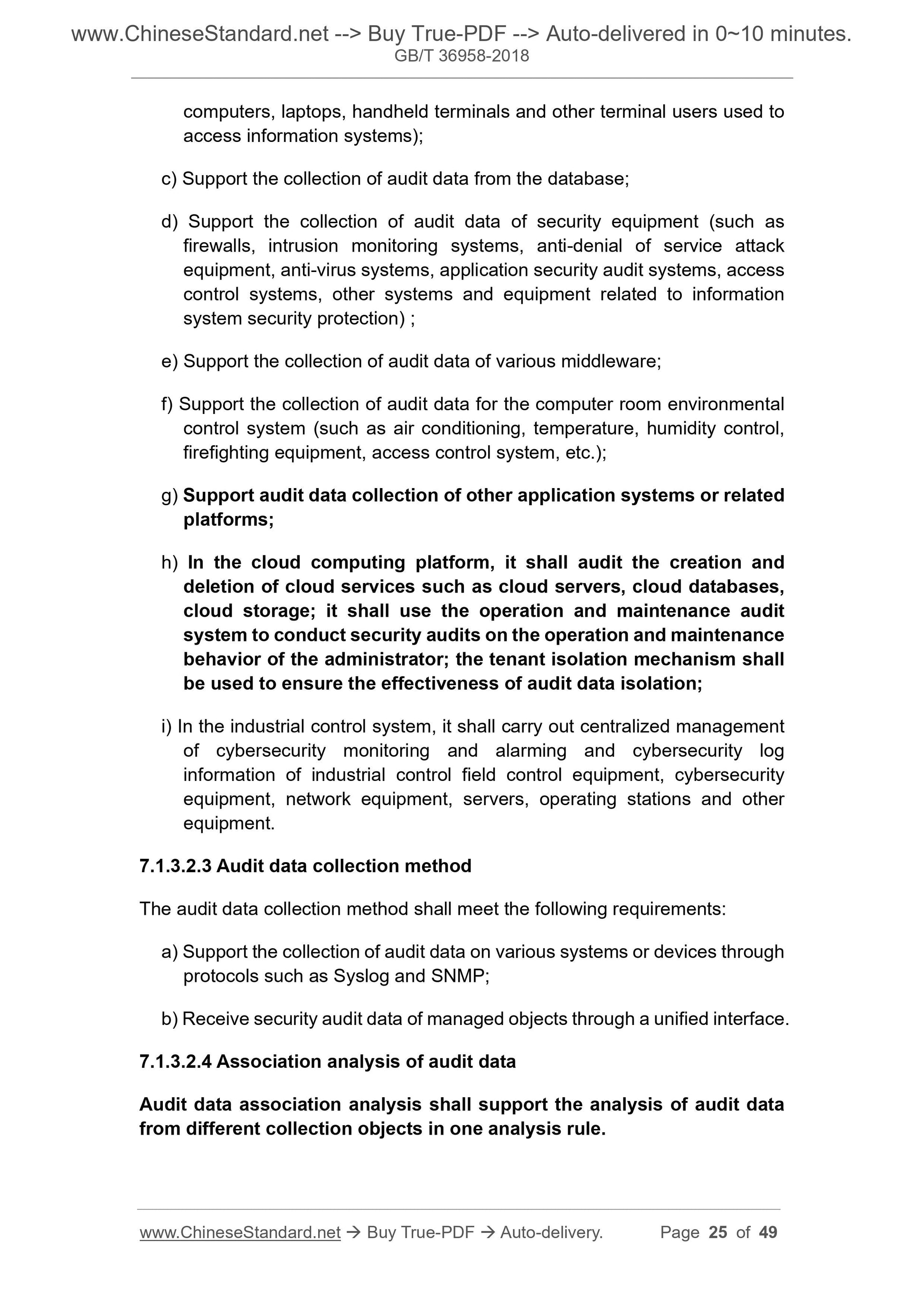1
/
of
12
www.ChineseStandard.us -- Field Test Asia Pte. Ltd.
GB/T 36958-2018 English PDF (GB/T36958-2018)
GB/T 36958-2018 English PDF (GB/T36958-2018)
Regular price
$370.00
Regular price
Sale price
$370.00
Unit price
/
per
Shipping calculated at checkout.
Couldn't load pickup availability
GB/T 36958-2018: Information security technology - Technical requirements of security management center for classified protection of cybersecurity
Delivery: 9 seconds. Download (and Email) true-PDF + Invoice.Get Quotation: Click GB/T 36958-2018 (Self-service in 1-minute)
Newer / historical versions: GB/T 36958-2018
Preview True-PDF
Scope
This standard specifies the technical requirements for the cybersecurityclassified protection for security management center.
This standard is applicable to guide security manufacturers and operating and
using organizations to design, construct and operate security management
centers in accordance with the requirements of this standard.
Basic Data
| Standard ID | GB/T 36958-2018 (GB/T36958-2018) |
| Description (Translated English) | Information security technology - Technical requirements of security management center for classified protection of cybersecurity |
| Sector / Industry | National Standard (Recommended) |
| Classification of Chinese Standard | L80 |
| Classification of International Standard | 35.040 |
| Word Count Estimation | 30,334 |
| Date of Issue | 2018-12-28 |
| Date of Implementation | 2019-07-01 |
| Issuing agency(ies) | State Administration for Market Regulation, China National Standardization Administration |
Share
